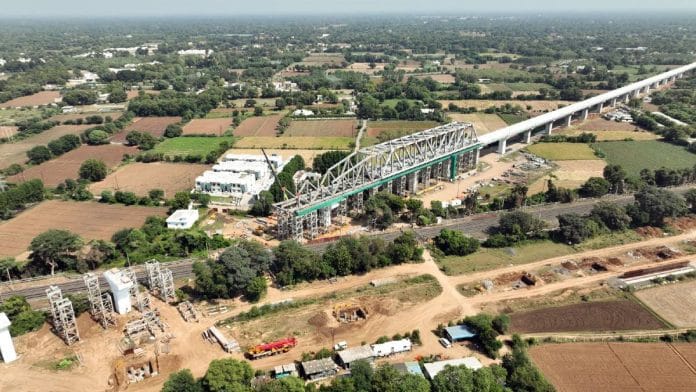New Delhi: Though the pace of central government’s capital expenditure (capex) on major infrastructure sectors in financial year 2024-25 has by and large stayed on course, the Economic Survey has underscored the need to increase current spending to meet India’s development aspirations.
“India needs a continued step-up of infrastructure investment over the next two decades to sustain a high rate of growth. Requirements are aplenty…,” Economic Survey 2024-25, tabled in the Lok Sabha Friday, notes, while pointing out that public capital alone is not enough to meet the demands.
“We need to ensure increasing private participation in infrastructure by improving their capacity to conceptualise projects and their confidence in risk and revenue-sharing mechanisms, contract management, conflict resolution and project closure,” the survey states.
The survey highlights the government’s thrust on infrastructure development. It notes that the Centre’s budgeted capex of Rs 11.11 lakh crore for FY2025 was about 3.3 times the capex for FY2020.
However, infrastructure spending slowed down during the first quarter of FY2025 on account of the model code of conduct in place for the 2024 general elections. Besides, heavy monsoon in many regions affected the progress of infrastructure spending, the survey states.
Capex, however, picked up pace again between July and November 2024.
Of the total Rs 11.11 lakh crore budgeted for capital expenditure this financial year, the government has spent Rs 6.85 lakh crore or 61.7 percent in the first nine months (April-December 2024) of the year, data from the Controller General of Accounts shows.
This marks a huge jump in a single month, since the data as of November showed that only about 46 percent of the budgeted amount had been spent by that time.
‘Physical indicators mirror financial progress’
Notwithstanding the electoral timetable, the survey notes that capacity addition in physical connectivity sectors stayed on course during FY2025.
“Progress of physical indicators in the current year mirrors the financial progress. The addition to the rolling stock of railways, port handling capacity and power and transformation capacity improved during FY2025 so far on a Y-o-Y basis,” the survey notes.
Though the addition to the length of highways, roads and railway lines has been modestly lower, on the whole, seen against the background of the constraints that prevailed in Q1FY2025, infrastructure build-up in the current year has stayed on course, the survey says.
For instance, the progress in expansion of the railway network stayed at levels comparable to the previous year, while the addition of rolling stock increased considerably.
Between April and October 2024, 17 new pairs of Vande Bharat trains were introduced to the network, and 228 coaches were produced. The railways completed 17 projects worth Rs 16,434 crore under the public private partnership model.
Among the big-ticket railway projects, the Mumbai-Ahmedabad High-Speed Rail corridor achieved 47.17 percent physical progress with an expenditure of Rs 67,486 crore, states the survey.
In the road sector, the shift from project-based national highway development to corridor-based approach helped increase the highway length from 91,287 km in 2014 to 1.46 lakh km in 2024. This approach takes into account evolving regional and national needs.
The Char Dham Mahamarg Pariyojna to connect all four dhams through a highway with a total length of 825 km and 620 km was completed in 2024, the survey notes, while the length of high-speed corridors expanded from 93 km in 2014 to 2,474 km in 2024.
‘Private participation should accelerate’
In conclusion, the survey points out that there are binding budget constraints for the different tiers of government.
“Private participation should accelerate in many critical infrastructure sectors in many ways—programme and project planning, financing, construction, maintenance, monetisation and impact assessment,” the survey states.
It adds that the strategy to step up private participation needs coordinated action from all stakeholders involved: the governments at different tiers, financial market players, project management experts and planners, and the private sector.
“The efforts of the Union Government would need to be supplemented with wholehearted acceptance of the need for public-private partnerships in infrastructure across the country,” the economic survey recommends.
(Edited by Nida Fatima Siddiqui)
Also Read: As growth slows & capex falls, Economic Survey suggests prioritising ‘efficient’ investment






